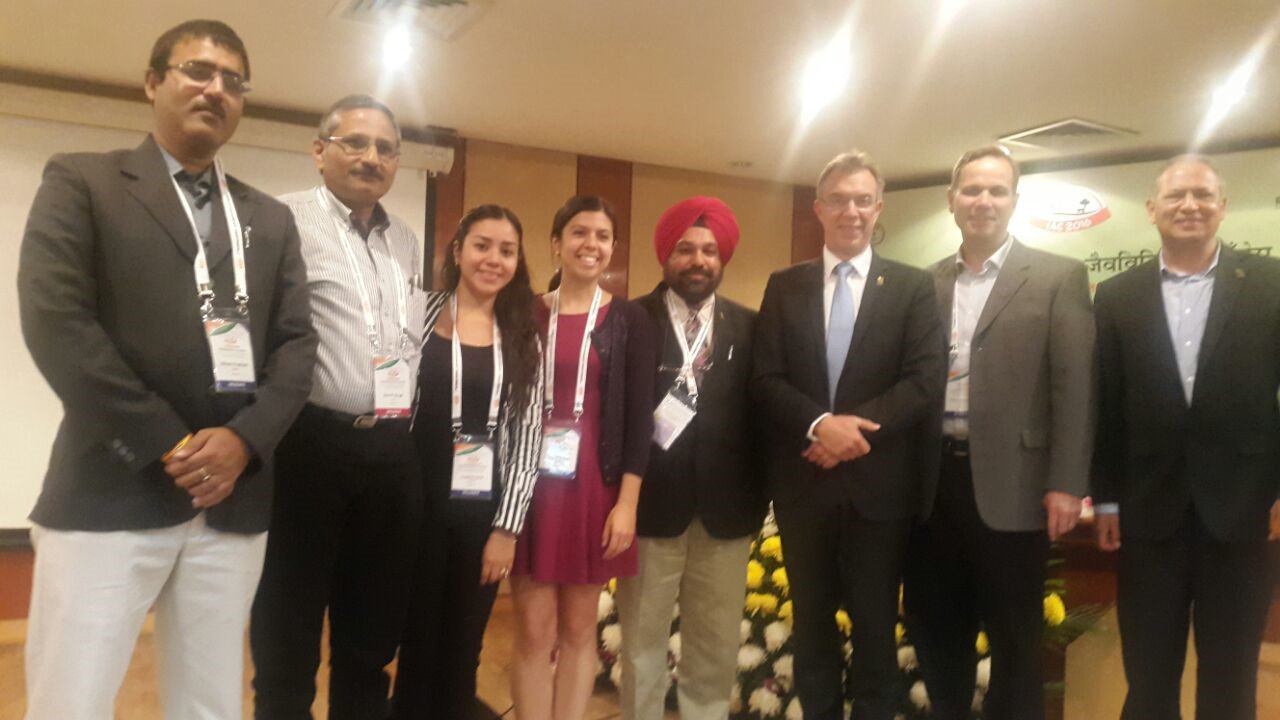
EL BATAN, Mexico (CIMMYT) – Researchers gathered last week at the International Agrobiodiversity Conference in New Delhi to improve global collaboration on harnessing genes in breeding that can help wheat withstand the effects of climate change.
Wheat is the most widely cultivated staple food in the world, providing 20 percent of the protein and calories consumed worldwide and up to 50 percent in developing countries. It is also particularly vulnerable to climate change, since the crop thrives in cooler conditions. Research has shown wheat yields drop 6 percent for each 1 degree Celsius rise in temperature, and that warming is already holding back yield gains in wheat-growing mega-regions like South Asia.
The International Maize and Wheat Improvement Center’s (CIMMYT) genebank serves as a vital source of genetic information and biodiversity. Breeders use this information to accelerate the development of wheat resilient to climate change by identifying varieties that display valuable traits like drought and heat-stress tolerance, which allow them to flourish despite stressful conditions.
However, all this genetic information is incredibly dense and requires filtering before breeders can efficiently use that information, according to Sukhwinder Singh, head of the wheat pre-breeding team at CIMMYT’s Seeds of Discovery (SeeD) initiative.
“Using new genes to improve wheat, or any crop, is incredibly difficult because often along with the desired traits, come numerous undesirable traits,” said Singh. “That’s where pre-breeding comes in – we essentially purify this huge pool of good and bad traits by identifying useful genes, like heat tolerance, then make these traits available in a form that’s easier for wheat breeders to access and use.”
Pre-breeding is done through cutting-edge, cost-effective technologies that characterize the genetic information of CIMMYT’s wheat genebank. Using these tools, nearly 40 percent of the 150,000 seed samples of wheat in the bank have undergone high-throughput genetic characterization, a process that allows pre-breeders to rapidly identify desirable traits in the varieties.
A recent successful example of pre-breeding was highlighted in a report that genetically characterized a collection of 8,400 centuries-old Mexican wheat landraces adapted to varied and sometimes extreme conditions, offering a treasure trove of potential genes to combat wheat’s climate-vulnerability.
“Pre-breeding helps us better understand and gather more information on what genetic traits are available in CIMMYT’s wheat genebank, so researchers can have more access to a wider variety of information than ever before,” said Prashant Vikram, wheat researcher who is also working with the pre-breeding team at CIMMYT.
However, as new genomics tools continue to develop, capacity building for researchers is necessary to ensure the potential impacts of the genebank’s biodiversity is fully realized and equitably accessible, said Kevin Pixley, SeeD project leader and program director of CIMMYT’s Genetic Resources Program.
During the IAC partners, scientists, students, and stakeholders from across the globe provided feedback on SeeD and pre-breeding initiatives, while CIMMYT led discussions on how to build genebank biodiversity for future food security and sustainable development. Increasing partnerships and multidisciplinary projects for stronger impact were identified as key needs for future initiatives.
 Innovations
Innovations 
